Diego Valles has revitalized the tradition of Mexican Ceramics. A native of Mata Ortiz, a small village in Chihuahua, Mexico less than 100 miles from the US-Mexico border, Valles has found his voice in the magic of the past.
My passion has always been art. I sculpt and paint as a distraction from my daily ceramics works made of clay. The decoration on my pottery and sculptural vases is free, hand painted and bi-dimensional, that is is created straight into the vase with no sketches drew prior to the actual process of painting on the clay body. However, lately I have been drawing lines on paper in order to direct my ideas about the upcoming projects. This has led me into painting. Actual translations of my ceramics paintings on to canvases and paper have taken a life of their own. Not anymore they are the same lines decorating the concave and convex surfaces of pottery. The colors I use for my paintings are influenced by the colors I use on my pottery, black red and white. Sometimes a turquoise or a maroon color line dives in and out of the maze of black and red. I strive for beauty, whatever I think it is, and hope to convey it to those who see my artwork.
The Process
All of my clay pieces are handmade from start to finish. The clay and mineral pigments are mined in the region and processed at my studio. Before clay can be used it is mixed with water in washtubs so that it can be separated from the rocks and organic materials it is imbedded with. Then, it is strained with to obtain a very fine and clean “clay soup.”
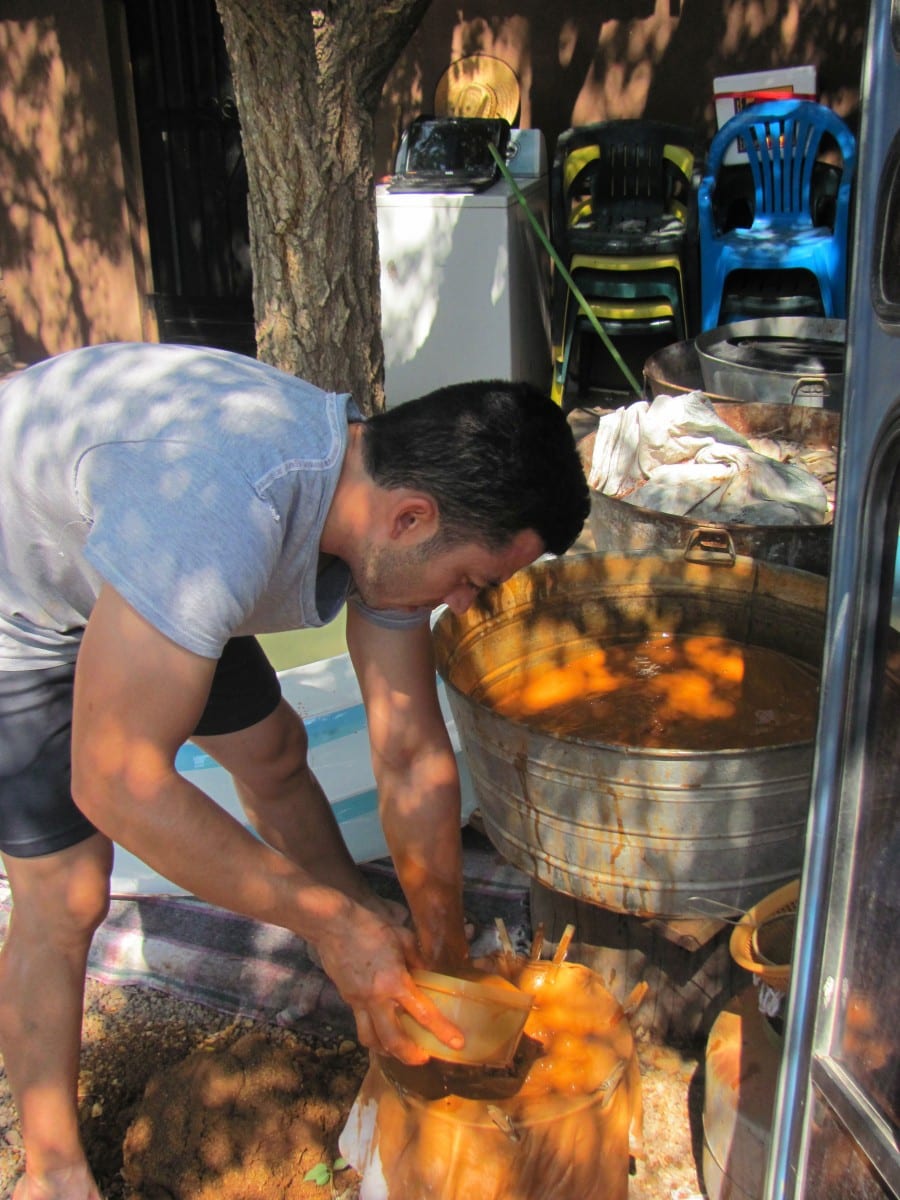
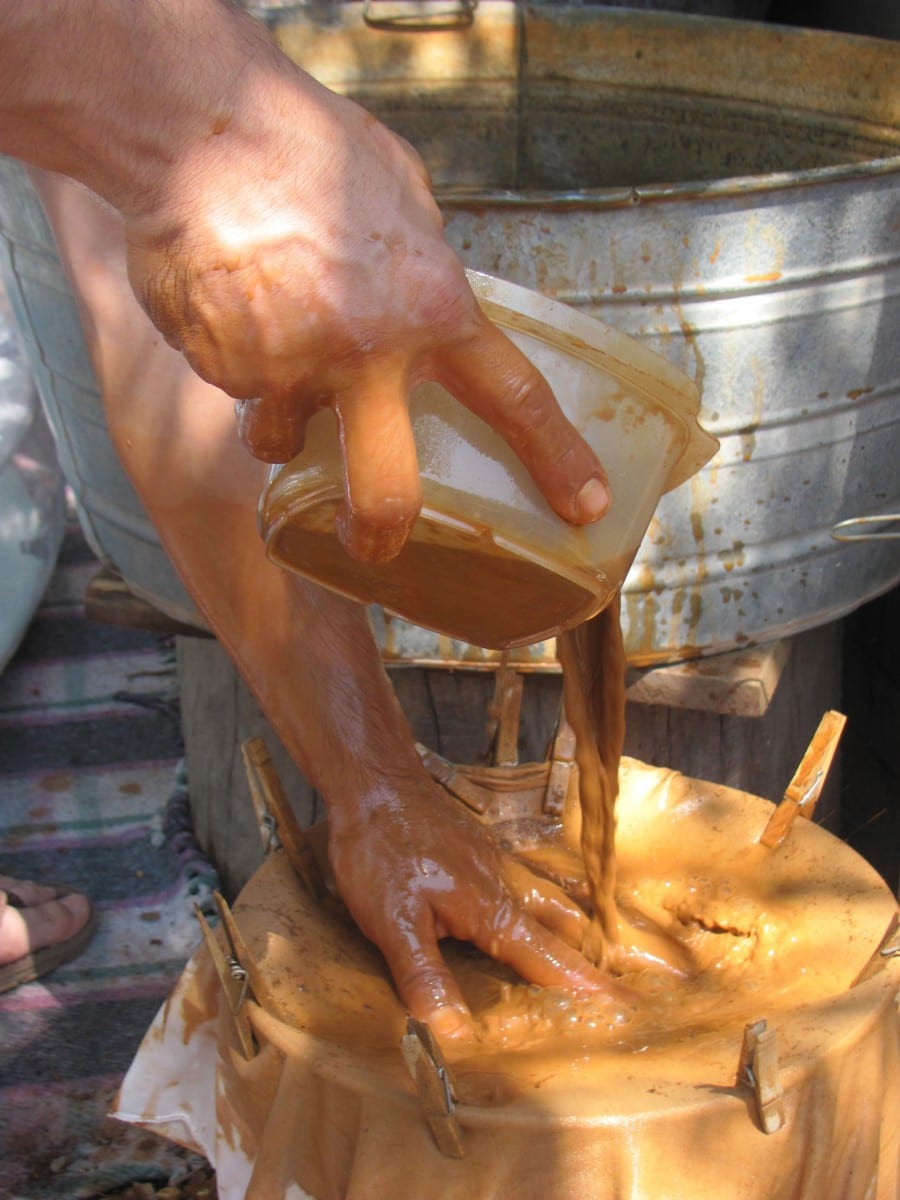
After that, the clay settles in the washtub and the water is removed. What is left is a quite a thick clay soup which is poured on a plaster base that absorbs more of the water. The clay acquires a play do like consistency and then it can be wedged so it is finally ready to use. The minerals from which the pigments are obtained go through the same process as clay but the final consistency is watery so that they can be applied with a brush over the clay surfaces being decorated. Generally I start my pieces rolling out a clay tortilla/clay slab which is set over a plaster base. This will be the bottom and support of the vessel or pot. Then the building of the rest of the body is by adding coils to the walls pinching and stretching up.
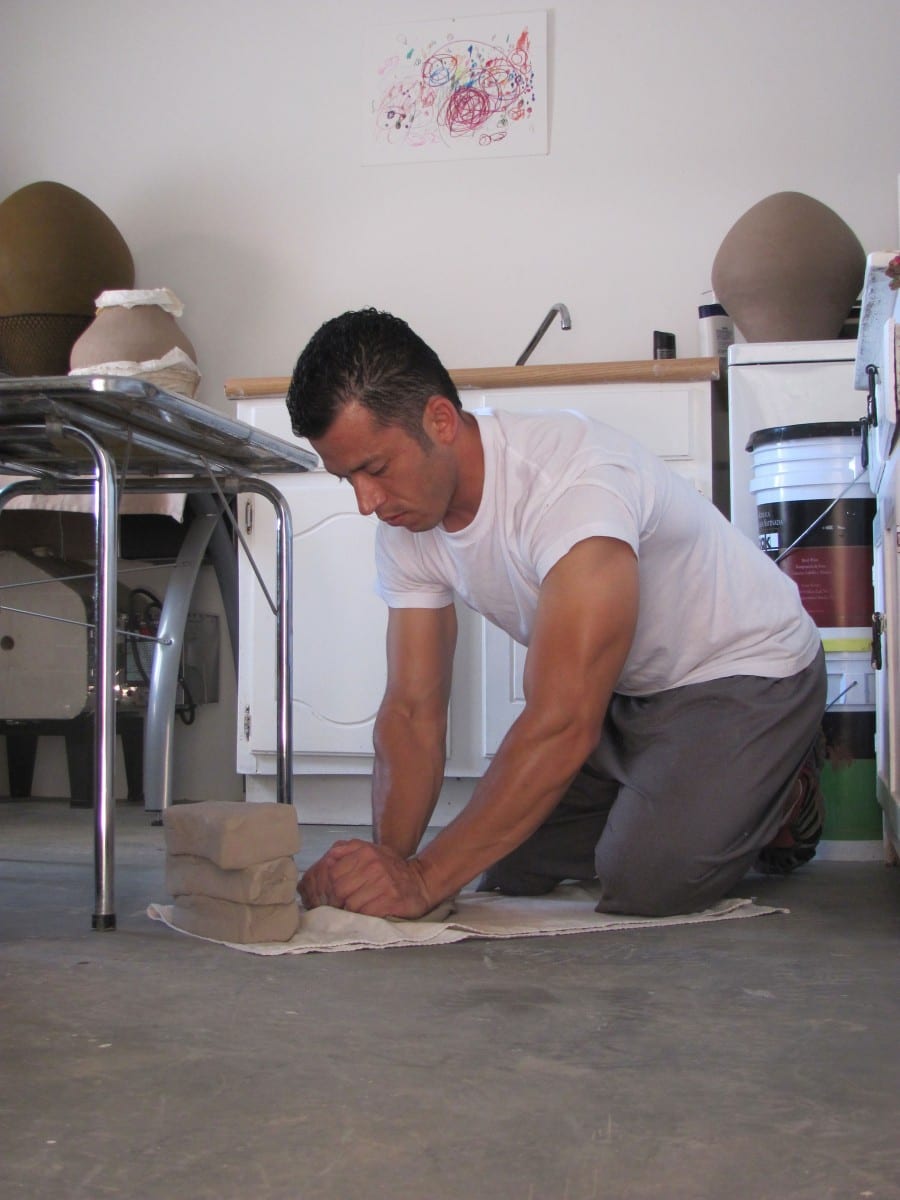
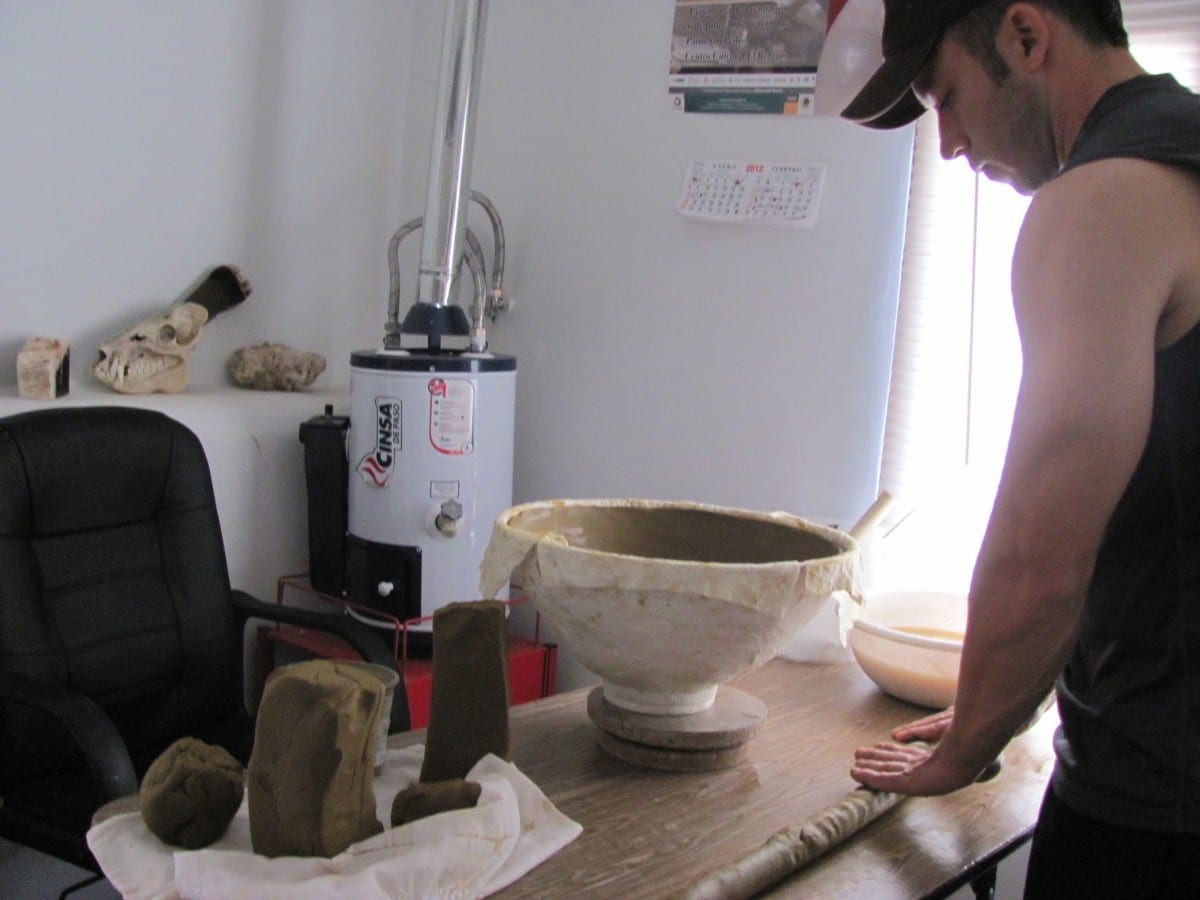
The piece dries out and then it is sanded until the surface becomes completely smooth and free of the sandpaper lines. At this point, the piece could either be polished or painted according to the finish I am trying to achieve. Usually I work with combination of surface finishes. By etching with a needle, patterned textures are created on a clay wall subtly reflecting the light in different directions which contrasts with the strong sheen created by a rock burnished area. A flat matte area sticks in and out of the shiny pattern creating a complex yet simple design without using painted lines yet.
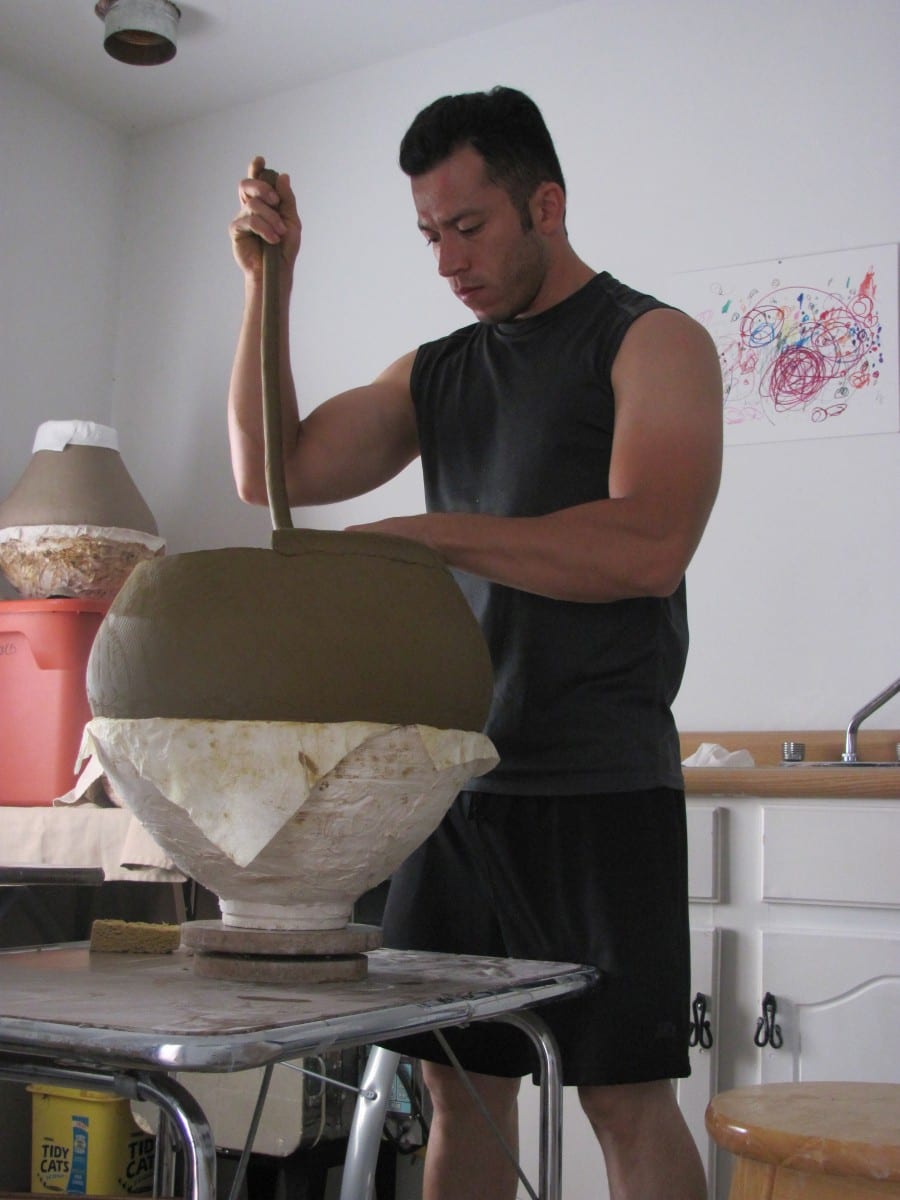
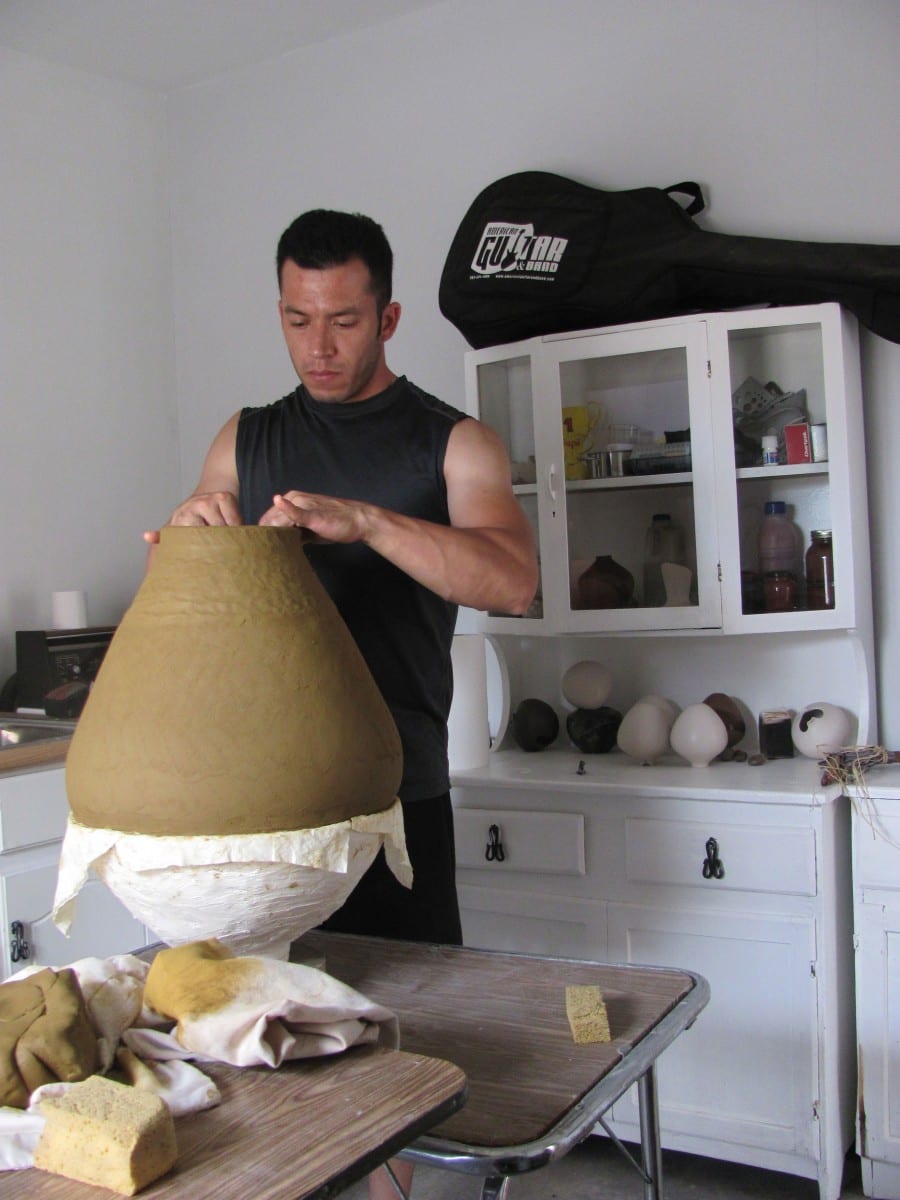
The thin lines that create the designs on the surfaces are made with human hair brushes. Five, six, seven strands attached to a stick or a Bic pen. No more. Keeping the tools as simple as possible also contrasts with the intricacy of the design. A broken knife and an old worn spoon make wonders when building a perfectly symmetrical vase the same way the simple brush will transform it into the most delicate object. “I may not be a potter,” my daughter said when she realized the woman and girl we saw on a road side were picking cow dung to be used later for fuel to fire their pottery. For most of my pieces I use cottonwood bark or the pinewood of the dead trees. The next time I fired a vase I used some cow dung trying to explain the differences and similarities to my five years old girl. Sometimes weeks of continuous work are spent on a single piece so I am not fighting technology when it comes to firing one of those. Thus an electric kiln is used instead.
Knot Sculpture, Spiral and Fire
Working on an art form without representing “real” beings or situations makes it difficult to convey the meaning or sense of the artwork. Usually my artwork has no apparent meaning. It is abstract. Pieces with no other function than to be. Senseless if you want. If so, it may be meaningful only to its maker. As a friend would say, “Don’t make me smoke your mental masturbations.” For the excitement behind an idea is yours and only yours and mean nothing to anybody else. And so again I barely talk about the ideas behind my artwork. They should speak by themselves. I hope some of them do.
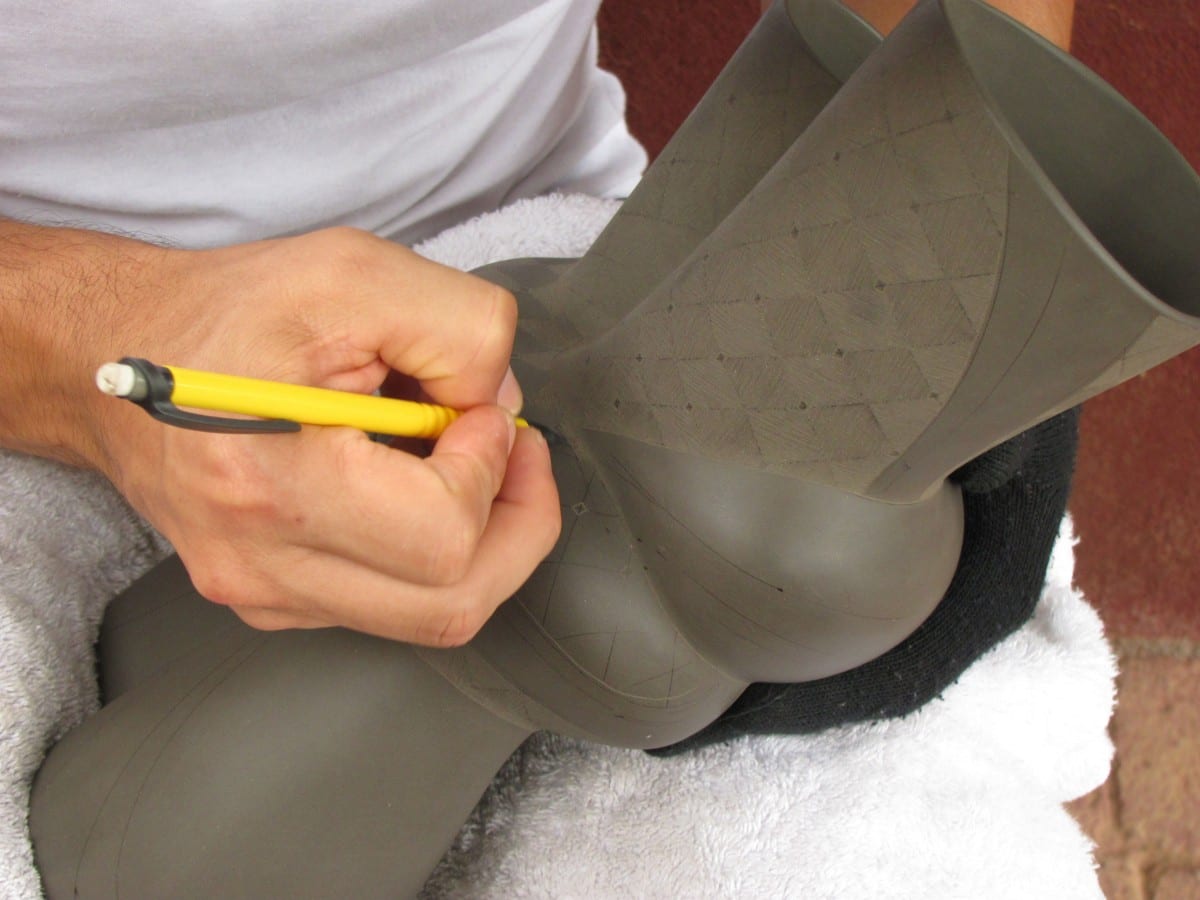
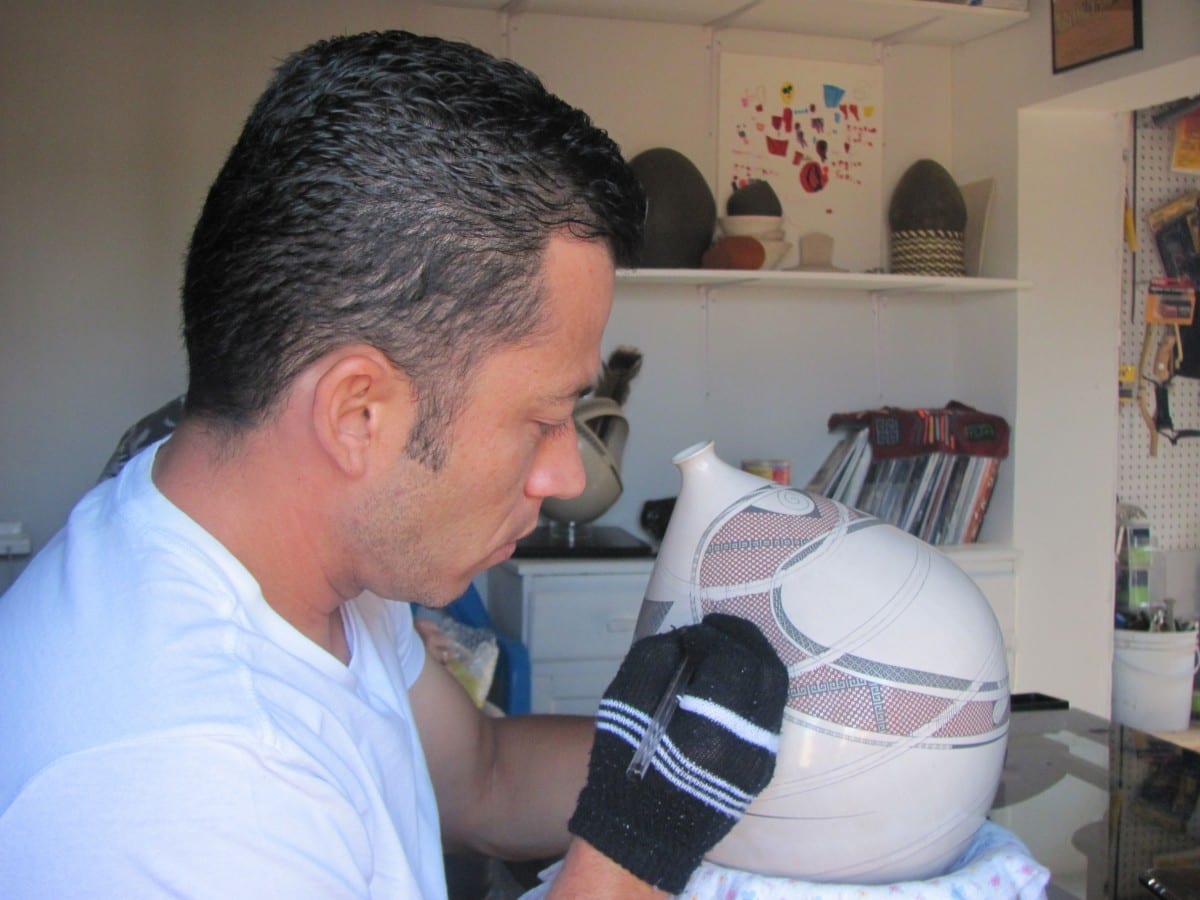
The sculpture represents a square knot which is used to join two different cords into a single piece. Despite the fact that the square knot is quite strong and well-ordered, it is not one of the most recommended given its potential instability. In this sculpture, one of the cords has a patterned texture as well as a red painted design. The second cord has a burnished finish as well as a white painted design. Although the two cords have quite different finishes, it still can be appreciated they both are made with the same clay. This is the way I tried to symbolize the concept of marriage. Two people, very different from each other but made out of the same matter, united to create a single body. Similarly to the square knot, marriage is a “potentially unstable” union but by working correctly it is the highest representation of family and a society.
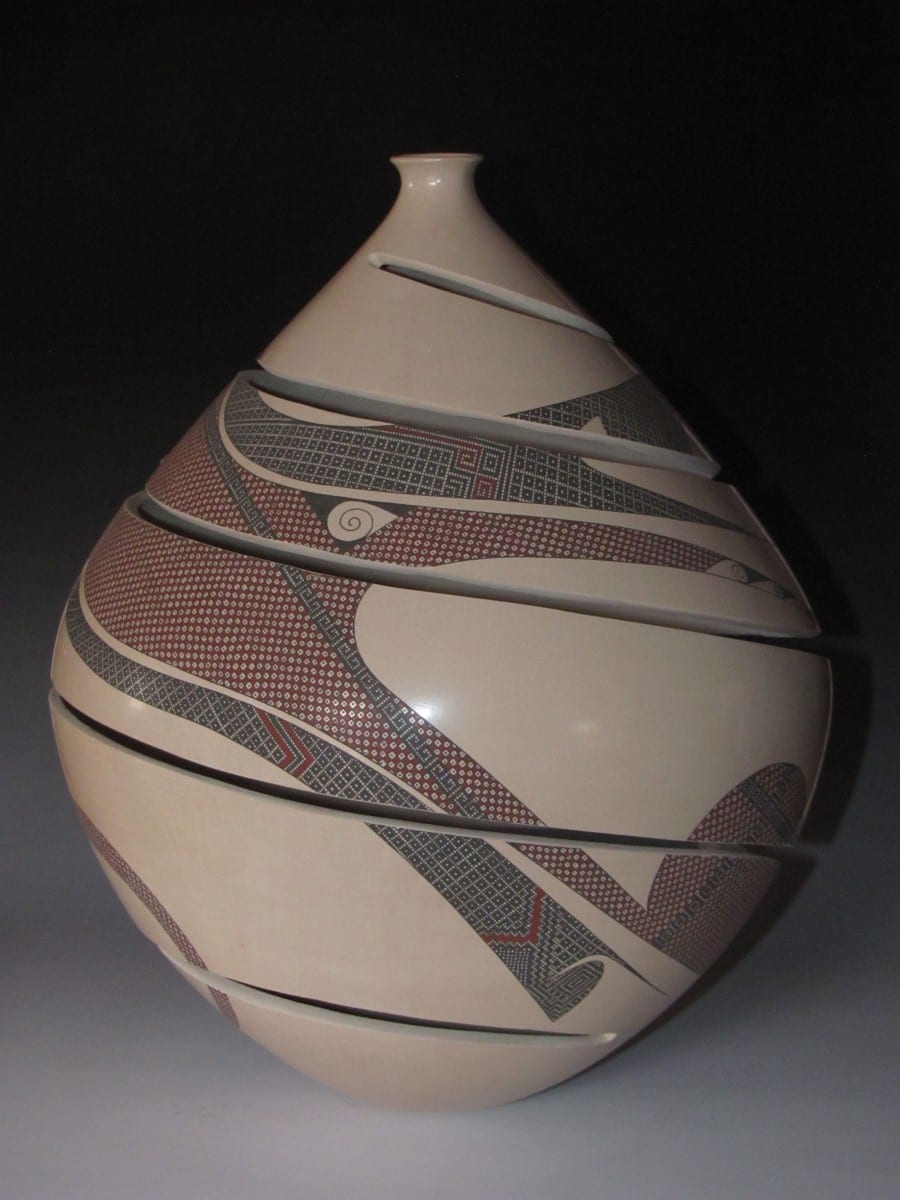
The spiral pot is a piece inspired by the graphic work of M.C.Escher particularly by Bound of Union. The two connected spirals picturing a man and woman heads. They are missing half of their faces to the negative space of Escher’s design. My spiral started as a whole simple pot. The painted design ran over its entire surface. Then the spiral was sketched over the spherical shape of the pot regardless of the part of the painted design it was going over. The spiral is cut away from the pot and what is left is another spiral, a clay spring I must say for it behaves as such mechanical device. The painted design is also a spiral, cut out of a piece of paper then stretched and curved …
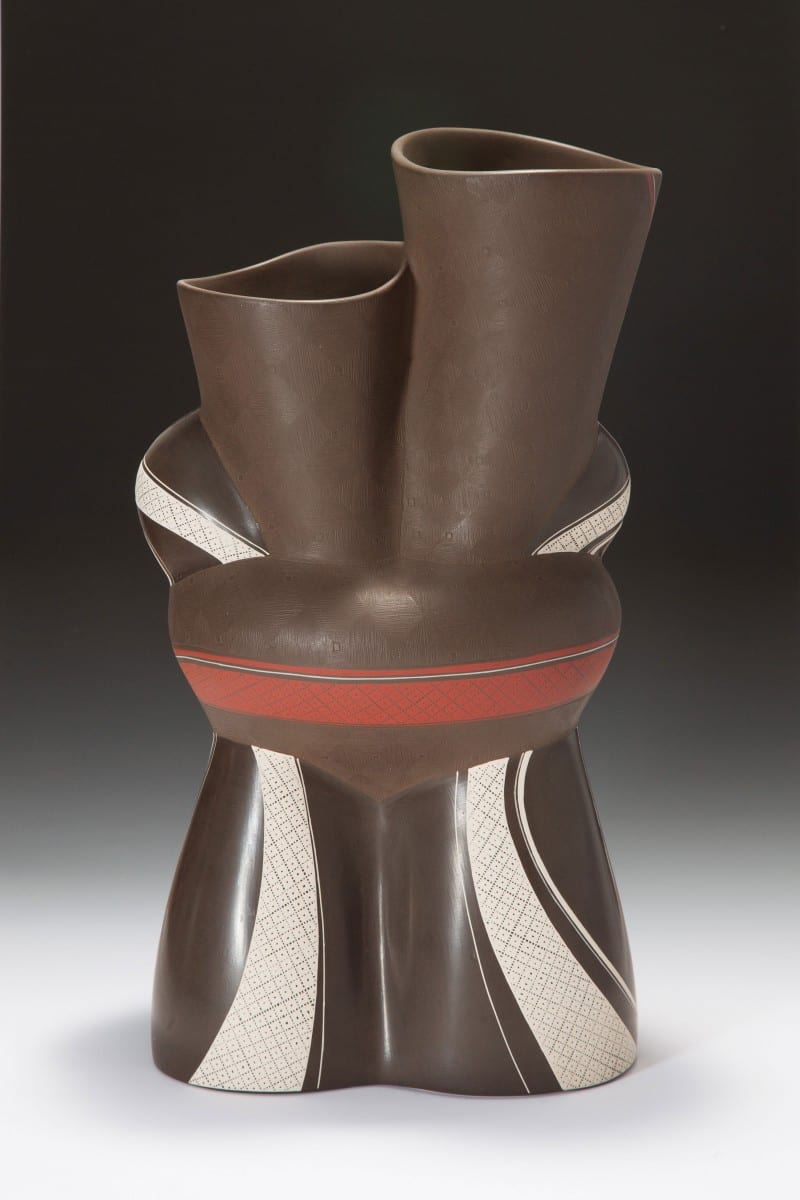
If you want a meaning behind a spiral, you may name it: origin, cycle, migration, etc. But beyond all that, even beyond the beauty of the object its purpose was to prove myself that if I can imagine it, it can be done. The Fire piece started as most of my creations, as a mistake. I have the painful custom of not letting a piece go. Even when they scream at me with every crack “let me go, I don’t want to be.” Both pieces forming the fire composition broke at a point or two … or three. But since the meaning may be the lesson the practice teaches you, I just kept modifying the shapes until they were satisfied with themselves for I believe many times the pieces choose their shapes and I am just the tool they use to take form. Most of my clay pieces may not have a meaning but at the end they have a purpose, to teach me a lesson and hopefully to inspire others through their beauty.
Featured Image: Portrait of Diego Valles © Jay Hemphill
All images ©Diego Valles and Modern Mata Ortiz
